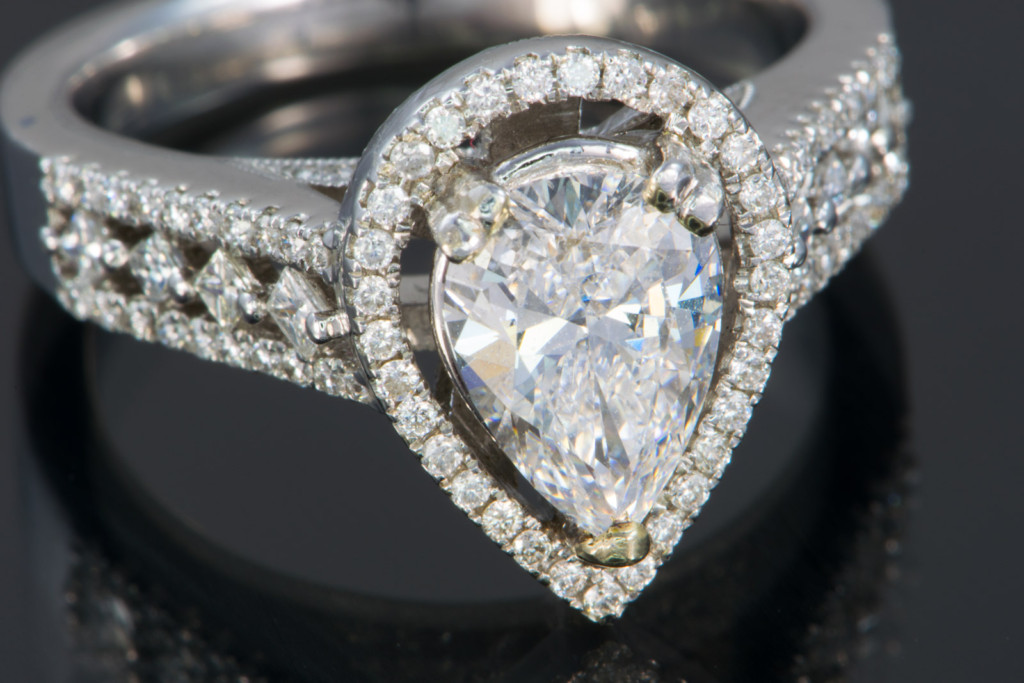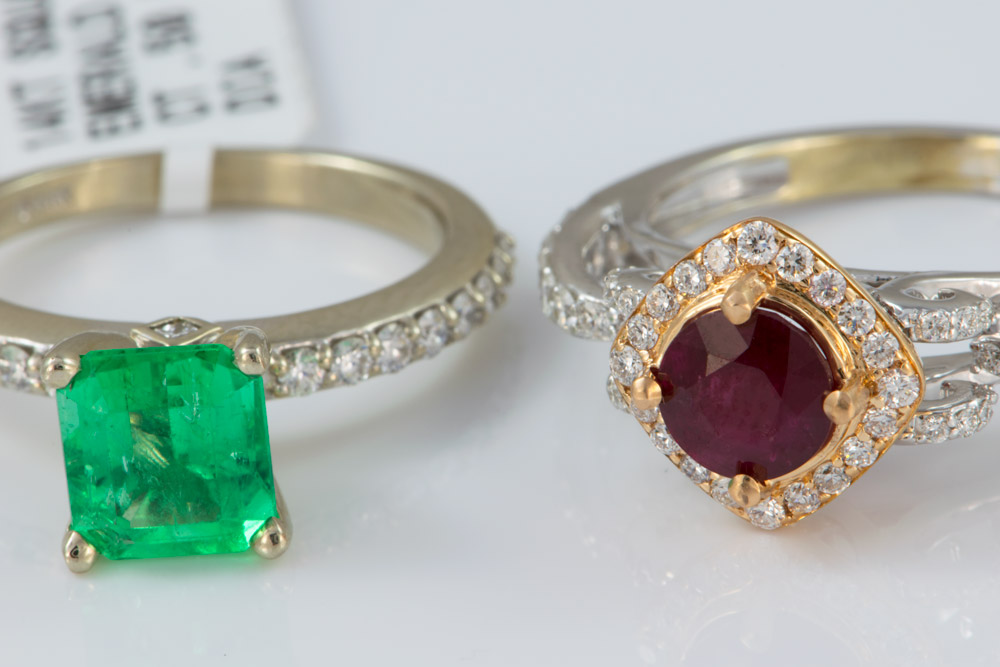Real Stones- Synthetic vs. Simulant

What is a “real” stone? Synthetic vs. Simulant
We are often handed a piece and asked “is this stone real?” This question is a little more complicated then most people understand, and in this article we will discuss what it means for gems to be real, synthetic, or simulated.
What is a real stone created by nature?
Gemstones are classified according to their chemical composition and crystal structure. Diamonds, for example, are made of pure carbon. Graphite is also made of pure carbon, but has a different arrangement of atoms which makes the two stones completely different. Other gemstones, such as ruby and sapphire, are both the mineral corundum and defined by their color. Corundum has a chemical composition of Al2O3, ruby is a corundum that has formed with trace elements in it to turn it red and sapphire is a corundum with trace elements that turned it blue. Real gemstones grow in the ground over thousands of years as heat and pressure turns rock into crystals.
What is a synthetic stone?
A synthetic stone is a real gemstone created by mankind instead of nature. For about 100 years humans have had the knowledge to create gemstones in expensive and complicated methods by which they take minerals and apply extreme heat and pressure to speed up the natural gemstone creation process. The stones created are chemically, physically, and visually identical to those grown by nature. This means synthetic rubies are exactly the same as rubies grown by nature except in very subtle ways that can sometimes only be detected by advanced laboratories. So is a synthetic stone a real stone? They are not just imitations, but most people assume that “real” implies grown by nature: and so the answer to that question is no, and thus the Federal Trade Commission requires that businesses disclose that a stone is synthetic and requires them to be called “created” stones. Chatham Created stones are one of the biggest name brands in synthetic stones and are known across the world as a quality gemstone even though they are man made. Synthetic stones lack some of the “magic” and “wonder” that natural stones have, but they can be a way to get a beautiful stone at a less expensive price.

Diamond is the most commonly imitated stone.
What is a simulant?
Simulant or imitation are the textbook terms for a fake stone. Simulants are stones that look like a different, typically more expensive, gemstone. Cubic Zirconia is one of the most famous and commonly used simulants, and is typically known for being a fake diamond. Moissanite is another diamond simulant which is more difficult to detect and still relatively expensive. Glass is a simulant that has been used for years for many gemstones. When people ask if a stone is “fake” they usually mean is it a simulant or imitation.
So what is a real stone? Gemstones created by nature are clearly “real”, and simulants are “fake”. Synthetics are more complicated but at Silver City we usually avoid them unless someone asks for one specifically. We hope you enjoyed this article the best jewelry store in Ocala, keep checking back here for more jewelry information and articles!

Inclusions are a good way to tell that a stone is natural.




